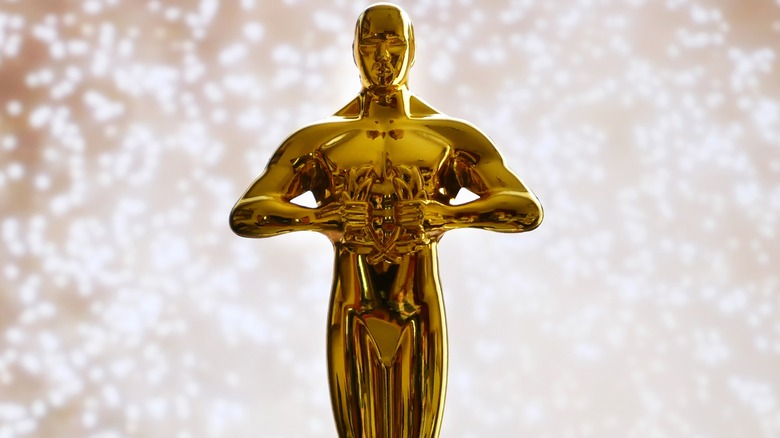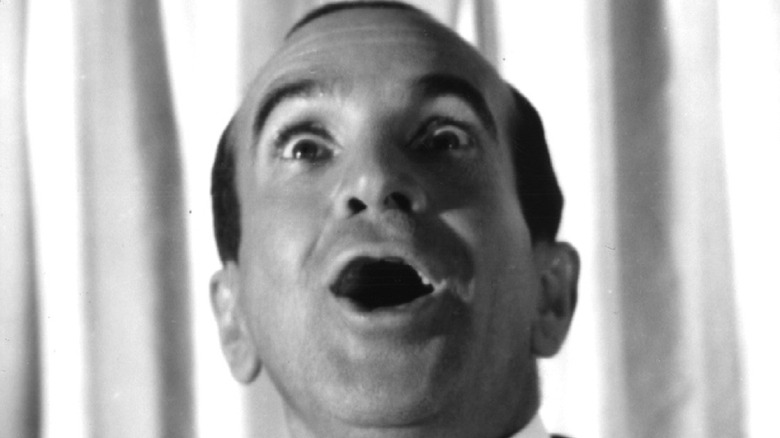The Real Reason The Jazz Singer Wasn't Nominated For Best Picture For The First Academy Awards
Around the time of the first Oscar ceremony in 1929, going to the movies looked and sounded entirely different. In fact, up until this point, films had all been silent features.
Viewers would pay about 25 cents to see a movie in the theatre. Silent films weren't entirely absent of sound. At first, movies were accompanied by a phonograph (which was similar to a record player). Later on, movies would be accompanied by an organist, pianist, or orchestra — and that sometimes included singers, actors, or narrators, too, according to Film Site.
Besides the obvious differences between silent films with live scores and talkie movies with diegetic sound, the acting in these films was quite different, too. Actors in silent movies overexaggerated their movements, and then title cards would explain what they were thinking or doing (via the Video Captions Corporation).
It didn't really matter what the actors mouthed when they were "speaking" on-screen — because the title cards did the talking for them. Slapstick actors, like Buster Keaton and Charlie Chaplin, were especially popular for their dangerous and hilarious antics (via Film Sites). It was a different acting style than talkies, where actors relied much more heavily on sound to convey the story. This collision of movie styles would change cinema forever.
The big differences in old movie styles
The 1927 film "The Jazz Singer" is widely regarded as the first "talkie" film (via Film Site). The movie, starring Al Jolson and May McAvoy, follows a man who loves ragtime and jazz music, but whose Jewish family wants him to follow in his family tradition of being a cantor in a local synagogue (via IMDb). He leaves home and creates a new name for himself as a singer and dancer. The film has synchronized visuals and audio — meaning that for the first time ever, when audiences saw Al Jolson talk and sing on the screen, they could hear him, too.
But that didn't bode well for the film when it came time to submit the movie for Oscar consideration. According to History, as the first "talkie" movie, the Academy didn't think it was fair to allow it to compete with silent films. "The Jazz Singer" was omitted from the Academy Awards, and silent movies only were allowed in the first year of the awards shows.
The 1929 film "Wings" was the first winner of the Academy Award for best picture — also the only silent film that ever held the title (via Oscars.) Looking back now, it's clear that the future of movies was the talkie after all.

